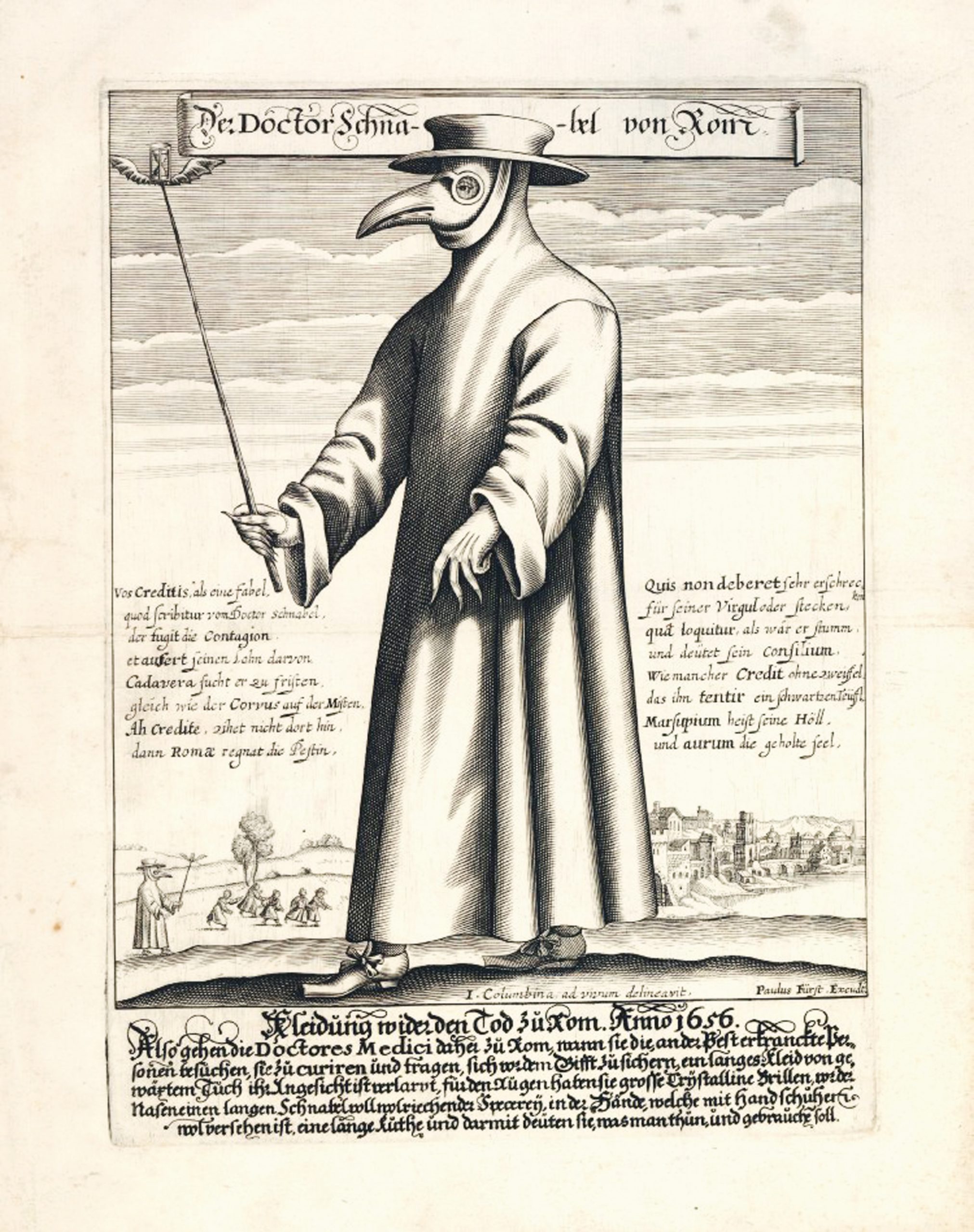A print showing „dr. Beak“ with satiric verses in a mixture of Latin and German, copper engraving by Paul Fürst, Nürnberg, around 1720. Fürst’s caricature of a doctor, ready to profit from the dying rather than to help the sick, shows the protective costume used by doctors during the plague epidemics of the 1600s and 1700s. The garb, described by Charles de l’Orme in 1619, may have been used earlier: it inspired the commedia dell’ arte costume of the „plague doctor“ as well. Oskar Rosenthal, ed., Die Heilkunde in der Geschichte und Kunst: Abreisskalendere für Ärzte 1926 [Medicine in History and Art: Tear-Off Calendar for Physicians 1926] (Berlin-Britz: IDRA Verlagsanstalt, 1925), National Medical Library. “Clothing against plague in Rome, 1656. This is how medical doctors in Rome walk about, when they visit the sick to treat them, they wear, for their own protection, a long coat from waxed cloth covering their face, large glass spectacles over their eyes, a beak filled with sweet-smelling spices over their nose and a stick in their hands, covered with gloves, to show people what to do and what to use. “
